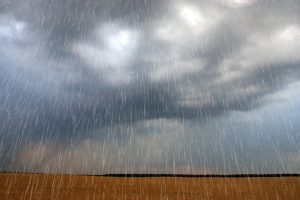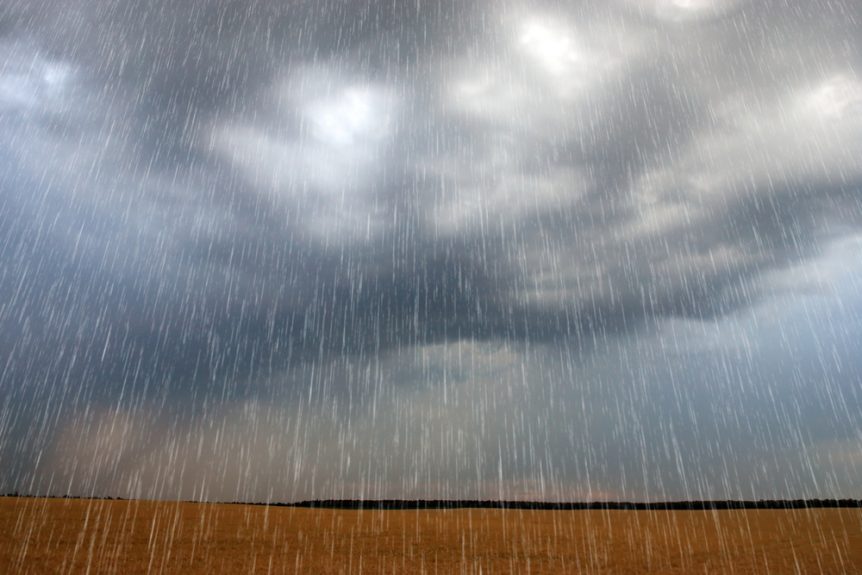
The state finds itself in an improved water-supply position going into the 2017-18 winter, thanks to the precipitation and snowpack the previous winter that filled reservoirs, topped rivers, replenished aquifers and flooded land.
“We’re much better than we were last year, and extraordinarily better than we were two years ago at this time, and that is definitely good news for the urban and agricultural regions of the state,” said Doug Carlson, a spokesman for the California Department of Water Resources. “We have 25.9 million acre-feet in the 154 reservoirs that we track. The historical average for those reservoirs is 21.7 million acre-feet, so we were 120 percent of the historical average.”
Andrea Bair, National Weather Service climate services program manager, said forecasters are keeping an eye on Pacific Ocean temperatures for a potential indication of the winter to come. Right now, forecasters expect a cooling of ocean temperatures, known as La Niña, to develop.
The La Niña “looks to be on the weak side,” Bair said.
What it all means for the California winter, she said, is hard to gauge.
“Yes, there’s a tendency towards warmer or cooler, wetter or drier, but there’s variability where other things can happen” to skew the forecast, Bair said.
As early-November rain rolled in, many farmers were working to finish harvest of summer crops, including cotton, pomegranates, walnuts and pistachios.
Mark Bagby of Calcot Ltd., a cotton marketing cooperative owned by growers in California and other states, estimated the state’s cotton harvest was 80 percent complete.
“It’s been a rough production year,” Bagby said. “We got off to a late and far-from-ideal start due to rain and cool temperatures. I think everyone would like a normal water year, if there is such a thing—rain starting in December and ending in March—but overall, the state is in much better shape than years past.”
Weather watchers and water officials expressed concern about wildfire-scorched areas and the potential for increased erosion and water runoff. DWR said it is responding to burn areas to evaluate mud and debris flow, identify on-site and downstream threats to public health and safety, and provide technical support and materials.
“This is the first time that any of those burn scars have had precipitation,” Bair said. “When you have a burn scar, your soil doesn’t tend to absorb precipitation like it does when it is not scarred, so (water) tends to run off quite quickly. We are just being very vigilant.”
Heavy rains last February caused concern for the safety of Oroville Dam on the Feather River, where the main spillway failed. DWR announced last week that phase-one construction on the spillway has been completed.
DWR said the spillway, which allows flood control water releases from the reservoir, has been rebuilt and strengthened to handle flows of 100,000 cubic feet per second. Construction for the second phase will continue as weather permits, the department said.
“The lake elevation is 695 feet, which provides nearly 2.25 million acre-feet of flood storage. This is a lot of available space to accommodate winter storms and spring runoff,” said Joel Ledesma, DWR deputy director.
Last month, DWR released a plan that calls for keeping Lake Oroville at a maximum elevation of 800 feet in November through March, and 830 feet in April and May, to provide space for inflows and manage releases from the reconstructed main spillway. In previous years, maximum elevation had been set at 848.5 feet from November through April and 870.1 feet in May.
Curtis Creel, general manager of the Kern County Water Agency, the second-largest contractor in the State Water Project, affirmed that a lower maximum elevation at Lake Oroville this winter could result in less available water next summer.
“If this water year that we’re in is dry, we could have an effect here locally of probably something like 250,000 acre-feet, so a reduction of our supplies. That’s probably enough water to irrigate 60,000 acres of high-value, permanent crops for a year,” Creel said.
Creel said the agency’s water districts “are trying to put as much water as they can into any place that they can put it—so groundwater storage, or if there is a place to store it on the surface. We have been maintaining a large reserve at San Luis Reservoir so that we can bring it into the county later this year.”
That means, he said, that if weather does turn dry, Kern County water districts “will have water supplies that they can then call on. This is just part of the water management culture here.”
In Yuba County, Brad Foster, who farms along the Feather River north of Marysville, said he is still tending to his walnut orchard that was damaged after the main spillway failed last winter.
“They had the spillway problem and then they realized that they couldn’t let the river water out slowly, that they had to do it all at once. When they made that decision, they collapsed the riverbanks for 30 miles north of Yuba City,” said Foster, who finished walnut harvest last week. “When the river dropped overnight, it just pulled the banks in on both sides, because it was so saturated with water; it was like applesauce.”
From a walnut orchard that was under water—an orchard that usually brings Foster the highest grade and quality, he said—the crop “was the worst on the ranch.”
He said he expects to lose several acres of trees due to standing water on his river-bottom land, and that collection of silt on the ranch was also a problem.
“There was 8 inches of silt in the orchard, and it’s like flour. You shake the walnut tree and the walnut drops an inch into this flour and you have to recover it,” Foster said. “We spent all year making our orchards flat again so we could harvest. All summer was spent cleaning up from the high water instead of doing our normal maintenance.”
Now, as the state enters into the 2017-18 water year, Foster said he must retrieve an irrigation pumping station that got pulled into the river and was covered in 10 feet of sand, which he said could cost $100,000. He said he has filed a grievance with the state for the damage caused.
Christine Souza is an assistant editor of Ag Alert. She may be contacted at csouza@cfbf.com. Permission for use is granted by the California Farm Bureau Federation.










